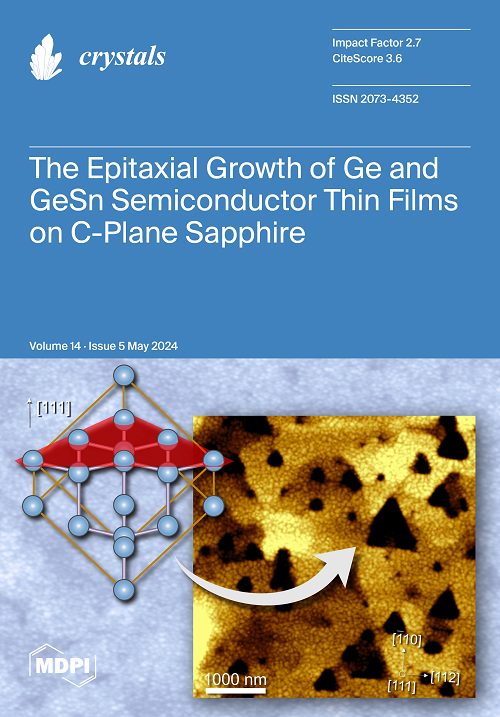通过纳米压痕应力松弛量化差排速度-应力指数
IF 2.4
4区 材料科学
Q2 CRYSTALLOGRAPHY
引用次数: 0
摘要
这项研究报告了一种利用压痕应力松弛表征差排速度-应力指数的新方法。通过压痕应力松弛过程,位错结构以位错速度控制的速率建立,而位错速度是外加应力的函数。因此,位错速度与应力之间的关系可以从应力随时间变化的压痕应力松弛数据中推导出来。本研究在纯铝样品上进行了仪器纳米压痕应力松弛实验,实验中采用了 100、400 和 800 nm/s 三种不同的初始位移速率。根据位错动力学的缩放特性,对数据进行了解释,得出室温铝的位错速度-应力指数为 2.5 ± 0.5。进行了晶体塑性有限元模拟,以说明拟议的纳米压痕应力松弛方法对差排速度-应力指数值的敏感性。本文章由计算机程序翻译,如有差异,请以英文原文为准。
Nanoindentation Stress Relaxation to Quantify Dislocation Velocity–Stress Exponent
This work reports a new methodology using indentation stress relaxation to characterize the dislocation velocity–stress exponent. Through the indentation stress relaxation process, the dislocation structure builds up at the rate governed by dislocation velocity, which is a function of the externally applied stress. The relationship between the dislocation velocity and stress can thus be derived from the indentation stress relaxation data of the stress as a function of time. In this study, instrumented nanoindentation stress relaxation experiments were performed on pure aluminum samples, following three different initial displacement rates of 100, 400, and 800 nm/s. Based on the scaling properties of dislocation kinetics, the data were interpreted to derive a dislocation velocity–stress exponent of 2.5 ± 0.5 for room-temperature aluminum. Crystal plasticity finite-element simulations were performed to illustrate the sensitivity of the proposed nanoindentation stress relaxation methodology to the dislocation velocity–stress exponent value.
求助全文
通过发布文献求助,成功后即可免费获取论文全文。
去求助
来源期刊

Crystals
CRYSTALLOGRAPHYMATERIALS SCIENCE, MULTIDIS-MATERIALS SCIENCE, MULTIDISCIPLINARY
CiteScore
4.20
自引率
11.10%
发文量
1527
审稿时长
16.12 days
期刊介绍:
Crystals (ISSN 2073-4352) is an open access journal that covers all aspects of crystalline material research. Crystals can act as a reference, and as a publication resource, to the community. It publishes reviews, regular research articles, and short communications. Our aim is to encourage scientists to publish their experimental and theoretical results in as much detail as possible. Therefore, there is no restriction on article length. Full experimental details must be provided to enable the results to be reproduced. Crystals provides a forum for the advancement of our understanding of the nucleation, growth, processing, and characterization of crystalline materials. Their mechanical, chemical, electronic, magnetic, and optical properties, and their diverse applications, are all considered to be of importance.
 求助内容:
求助内容: 应助结果提醒方式:
应助结果提醒方式:


